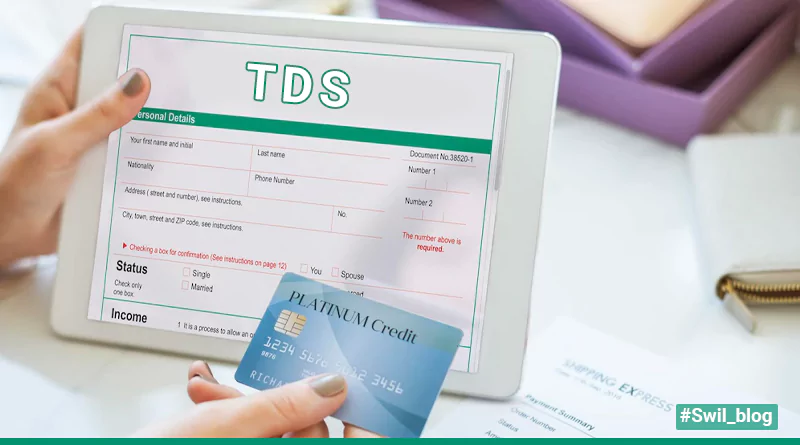Is there anything more frustrating than having to pay taxes? Well, actually, yes! Taxes are one of the main ways governments raise money to fund the various services they provide to the citizens.
But how does tax deduction at source work? And what are the different TDS rates applicable in India for FY 2022-23 (AY 2023-24)? We’ll address all of your questions in this article.
So don’t wait any longer – read on to learn everything you need about tax deduction at a source in India!
Article Content–
- What is the Tax Deducted at Source (TDS) Rates in India?
- How does Tax Deduct at Source (TDS) work?
- Tax Deducted at Source (TDS) Rates for FY 2022-23 (AY 2023-24)
- How is Tax Deducted at Source (TDS) calculated?
- Are there any exemptions from Tax Deducted at Source (TDS)?
- What penalties are for non-payment of Tax Deducted at Source (TDS)?
- Frequently Asked Questions
- Conclusion
What is the Tax Deducted at Source (TDS) Rates in India?
It’s tax season in India, so it’s time to check your TDS Rate chart! The TDS rate is the tax deducted at source (TDS) for an individual or a company in India. The TDS rate applies to all types of taxes – central and state, customs duties, etc.
It’s essential to know your TDS Rate to pay the correct amount of tax when filing your Income Tax Return (ITR). The current TDS Rate in India is currently 10%. Ensure you’re up-to-date on the latest rates to pay the correct tax amount and file your return on time.
How does Tax Deduct at Source (TDS) work?
TDS rate is a tax deducted from an employee’s salary at the time of payment. Understanding how it works is essential to making the most of it.
Tax is deducted at source when employees pay income tax on their wages. This is done through their employer, who then deposits this money into the employee’s bank account or a designated department within the company.
This way, the employee can use it to pay any taxes due, such as sales tax or Value-Added Tax (VAT). The employer remains responsible for paying any taxes that may be due, even if the employee doesn’t have to pay income tax.
This is important to remember, as it can save the employee a lot of money in the long run.
Tax Deducted at Source (TDS) Rates for FY 2022-23 (AY 2023-24)

The Income Tax Department has recently reduced the TDS rate to 5% for FY 2022-23 (AY 2023-24). This applies to all taxable payments made through E-Passbooks, net banking, debit and credit cards, etc.
All taxpayers must be updated about this change to reflect their returns filed during FY 2022-23 (AY 2023-24) and subsequent years.
This is great news for taxpayers who make tax payments through various modes of payment. The reduced TDS rate will help to speed up the tax process.
1. TDS Rate Chart
Are you curious about the latest tax news and updates in India? Looking for an easy way to stay informed on all things related to taxes? Then make sure to check out CBDT’s TDS Rate Chart.
TDS Rate Chart for FY 2022-23
| Section | For Payment of | Threshold limit | TDS Rate % |
|---|---|---|---|
| 192 | Salary Income | Rs 2,50,000 | Slab rates |
| 192 A | EPF – Premature withdrawal | Rs 50,000 | 10% |
| 193 | Interest in Govt Securities | Rs. 10,000 | 10% |
| 194 | Dividend | Rs 5,000 | 10% |
| 194 A | Interest by banks/post offices other than on securities | Rs. 40,000 (Rs 50,000 for Senior Citizens) | 10% |
| 194 A | Interest by others other than in securities | Rs. 5,000 | 10% |
| 194 B | Winnings from Lotteries / Puzzle / Game | Rs. 10,000 | 30% |
| 194 BB | Winnings from Horse Race | Rs. 10,000 | 30% |
| 194C | Contract | Rs 30,000 (Single Transaction) Rs 1,00,000 (Aggregate of Transactions) | 1% (Individuals/HUF) 2% (Others) |
| 194 D | Payment of Insurance Commission | Rs. 15,000 | 5% (10% in the case of domestic companies) |
| 194DA | Maturity of Life Insurance Policy | Rs 1,00,000 | 5% |
| 194E | Payment to non-resident sportsmen/sports association | Rs 0 | 20% + Cess |
| 194 G | Commission on Sale of Lottery tickets | Rs 15,000 | 5% |
| 194 H | Commission or Brokerage | Rs 15,000 | 5% |
| 194 I | Rent of Land, Building, or Furniture | Rs. 2,40,000 | 10% |
| 194 I | Rent of Plant and Machinery | Rs. 2,40,000 | 2% |
| 194 IA | Transfer of Immovable Property, other than Agricultural land | Rs. 50 lakhs | 1% |
| 194 IB | Other Rent | Rs 50,000 (per month) | 5% |
| 194IC | Payment of monetary consideration under Joint Development Agreements | Rs 0 | 10% |
| 194J | Fees for professional or technical services | Rs 30,000 (Rs 0 in case of Directors) | 2% (Technical services or call centers), 10% (Professional services) |
| 194K | Income in respect of units (UTI/MF) | Rs 5,000 | 10% |
| 194LA | Payment of compensation on acquisition of certain immovable property | Rs 2,50,000 | 10% |
| 194 LB | Interest from Infrastructure Bond to NRI | NA | 10% |
| 194 LD | Interest on Rupee denominated bonds, municipal debt security, and govt. Securities | NA | 5% |
| 194M | Contract, commission, brokerage, or professional fee (other than 194C, 194H, or 194J) | 50 Lakh | 5% |
| 194N | Cash withdrawal from bank and ITR filed | Rs 1cr | 2% |
| 194N | Cash withdrawal from bank and ITR not filed | Rs 20 Lakh | 2% |
| 194N | Cash withdrawal from bank and ITR not filed | Rs 1cr | 5% |
| 194O | E-commerce sale | Rs 5 lakh | 1% |
| 194P | TDS on Senior Citizen above 75 Years (No ITR filing cases) | Rs 3 lakh | Slab Rates |
| 194Q | Purchase of goods | Rs 50 lakh | 0.10% |
| 194R | Benefits or perquisites arising from business or profession | Rs 20,000 | 10% |
| 194S | TDS on payment for Virtual Digital Assets or cryptocurrency (w.e.f. 01.07.2022) | – | 1% |
| 206AA | TDS rate in case of Nonavailability of PAN | – | Higher of – As per act Twice the rate or rate in force 20%d |
| 206AB | TDS on non-filers of ITR at higher rates | – | Higher of – 5% – Twice the rate or rate in force |
This handy information will help you understand tax rates for different fiscal years. You can also download CBDT’s e-Services App, which provides users instant access to various tax-related queries.
2. Non-resident Individuals
If you are a non-resident individual, keeping tabs on the latest TDS rate chart in India is essential. This will help you properly plan your income tax filings and pay the correct taxes.
The current TDS rate for FY 2022-23 (AY 2023-24) as per the Income Tax Act, 1961, is detailed below. Make sure to consult with an accountant or tax advisor for more accurate information about your particular situation.
3. Domestic Companies
Specific tax rates apply to companies that earn income from taxable services. The TDS rate chart will be regularly updated, so businesses need to stay up-to-date with the latest rates.
Some exemptions apply to Domestic Companies, so consult your accountant for more information on which ones these are. Note that foreign entities (including branches of Indian companies) cannot avail of any exemption and must pay the total tax rate in India.
4. Companies Other than Domestic Organizations
If you are a company registered outside India and your income is sourced in India, you must comply with the TDS (tax deducted at source) regulations.
In its latest update, the Central Board of Direct Taxes (CBDT) has announced the final TDS rates for FY 2022-23. The TDS rate applicable to companies other than domestic organizations has been released as 15%.
This applies to income generated from any business activity or contract in India.
How is Tax Deducted at Source (TDS) calculated?
When you pay someone in cash, the employer deducts the tax at the source (TDS). This means that the employer gets a refund of income tax that was previously paid on behalf of employees.
TDS is also applied when people receive benefits in cash, such as pensions or social security payments. The rules surrounding TDS are relatively complex and depend on several factors, including where the payment is made and who pays for it.
However, the general principle is that employers must deduct income tax from any money they give to their employees, either directly or indirectly.
Are there any exemptions from Tax Deducted at Source (TDS)?
It’s time to check your TDS rate chart in India! TDS stands for tax deducted at source, and it’s a vital tax deduction that you can claim on your income tax return. The chart lists the rates for various items and the applicable exemptions.
Make sure you know which items are subject to TDS before preparing your taxes, as several exemptions exist.
The most common exemptions are agricultural products, luxury goods, and permanent stocks. If you’re not sure whether an item is subject to TDS or not, it’s a good idea to consult with your tax advisor.
Remember that the tax deducted at source is taxable, so keep track of it so you don’t overpay.
What penalties are for non-payment of Tax Deducted at Source (TDS)?
Paying your tax dues is essential, not just for the taxman but for your good. If you’re an employer and fail to deduct and remit the correct amount of Tax Deducted at Source (TDS), you will likely face various penalties.
The most common penalties involved are imprisonment, seizure of assets, and cancellation of licenses. All employers need to know their obligations under the Tax Act, so they don’t get into trouble with the authorities.
In addition to the penalties mentioned above, other consequences such as publicity can befall an employer that doesn’t pay its tax dues. Ensure you’re up-to-date with India’s latest TDS rate chart so you don’t get caught.
Frequently Asked Questions
A TDS Certificate is an assurance from the income tax department that the income tax paid on a particular income has been correctly deducted from that person’s income.
It is permissible to promote TDS rates as long as they are declared in the tax return and the correct rate is used.
The tax deductible at source (TDS) rates apply to securities interest is 12% for income from shares, bond, and debenture issues and 15% for payment from unit trusts and mutual funds.
If there is an error in the deduction of Tax at Source (TDS), you should contact your tax advisor for further guidance.
The fixed deposit tax deduction at source (TDS) rate is 1%.
Conclusion
The Tax Deducted at Source (TDS) rates in India is currently applicable per the notification dated 06.12.2018 issued by the Central Board of Direct Taxes (CBDT).
The tax deducted at the source is applicable on salary, interest, dividends, and other income from any source within India.
The tax deducted at the start is computed based on the individual's gross income, not the income tax return filing status. The tax deducted at source is mandatory for individuals who are salary earners, interest and dividend takers, and business owners.
The tax deducted at the start is non-refundable. The tax deducted at birth also applies to foreign entities registered for business in India.







